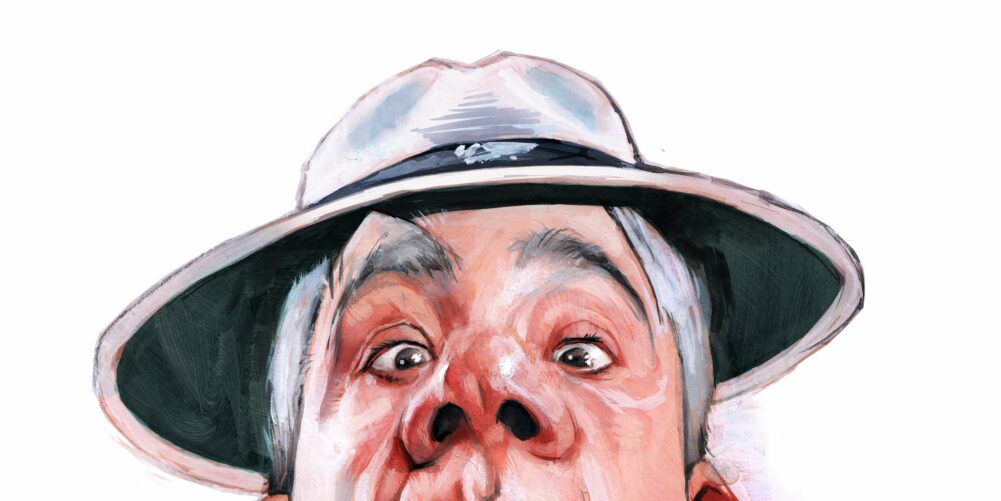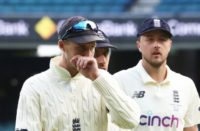This has not been the most convenient time for the junior doctors to be kicking up a fuss, just when the new cricket season is adding to the burden on the nation’s surgeries. Quite apart from the thousands suffering from shock following the news that Leicestershire won their first Championship match of the summer, there are people out there requiring urgent treatment for hypothermia, chilblains and frostbite.
In the same week I read a newspaper article in which some boffin or other was issuing the direst warning yet about the impact of global warming, supporters at the Oval and Edgbaston were killing time between weather delays by building snowmen, in contrast to the tropical conditions down at Chelmsford, where the members were basking in their deckchairs waiting for it to stop sleeting.
Much more of this and the doctors’ dispute may well start to impact on the nation’s A&E departments, as it’s only a matter of time before someone suffers an uncontrollable bout of the shakes taking the top off a flask of Bovril, with the subsequent spraying of its contents all over the members enclosure resulting in multiple cases of third degree burns.
There is something heroically British about sitting around for hours watching cricket in the freezing cold, wondering whether Warwickshire will change their nickname to the Polar Bears, but what else can you expect if you launch a new season at the same time of year furry animals are still waiting for the alarm to go off down in their winter hibernation holes. No batsman nowadays seriously threatens the old romantic milestone of 1,000 runs before the end of May, but 1,000 goose pimples before the end of April is pretty well guaranteed.
However, while dashing for the sanctuary of a bus shelter the other day to avoid being battered to death by hailstones seemed to me to be a not unusual feature of April’s meteorological quirks and foibles, you wonder whether there is any such thing as a safe time to start playing cricket in England. Snow in April is one thing, but it’s a bit of shock when you throw back your hotel bedroom curtains in June and wonder – as was the case with Lancashire’s cricketers at Buxton in 1975 – whether to whistle up a cab for the ride the ground, or a team of huskies.
That was in the days of uncovered pitches, and when the snow thawed, and turned the pitch into what cricket people refer to as a “sticky dog”, the Derbyshire middle order batsman Ashley Harvey Walker removed his false teeth before any of Lancashire’s seamers had time to remove them for him, and handed them to umpire Dickie Bird for safe keeping.
Early Test matches in England can be pretty hard on visiting players accustomed to warmer weather, although some handle it better than others. The West Indies, for example, traditionally respond to a dip in temperature like a desert lizard, and shut down all systems until the weather warms up.
At Headingley in 2013 the temperature of 7C equalled the record for the lowest temperature in a Test, and the West Indies effectively downed tools in protest at the cold and lost by an innings and 283 runs. There was not a single recorded instance of one of their batsman or a fielder moving his feet, although in mitigation it’s hard to move your feet when you can’t actually feel them.
The other Test in which the thermometer dipped as low was at Edgbaston for England v New Zealand in 1965, which was also the first Test in this country to feature drinks breaks.
They didn’t actually exist officially, but on this occasion the players were only able to function with regular supplies of mugs of tea and hot soup. However, it is not entirely the case that everywhere other than England involves bare-torsoed spectators slurping cold lager from plastic beakers and throwing another prawn onto the barbie, as the two occasions I came closest to freezing to death on a sports ground were both in Dunedin, on New Zealand’s South Island.
The first was for a rugby match involving the All Blacks in the New Zealand winter, so no great surprise there, but the other was an ODI in mid-summer, when the journalists almost came to blows in the Press box fighting to get near a single bar electric fire.
Not many cricket Press boxes in Australia require electric fires, although first time visitors to Melbourne can sometimes fall victim to its peculiar micro-climate. The city’s skyscrapers cast shadows that result in one sunny side of the street, where people wander about in shorts and T-shirts, and one shady one, where all those dressed up as eskimos are not Barmy Army recruits on fancy dress Saturday, but canny locals just trying to keep warm.
Neither is India always unbearably hot, leastways it wasn’t in January 2013, when the temperature got down to 1.9C during a one day international between India and Pakistan in New Delhi. Cold enough for regular deliveries of hot water bottles out to the middle, which the players shoved under their sweaters to thaw themselves out.
By and large, though, it is England which hosts the coldest cricket matches.
It can get pretty parky up in the northern outposts, such as Durham and Scarborough, but the ground at which spectator survival is impossible without thermal underwear and whale blubber for lunch is Cambridge University’s HQ at Fenner’s, where they don’t so much get the traditional cricketing crowd of two men and a dog as two men and a brass monkey.
You can park your car close to the boundary rope at Fenner’s, and most of the spectators, certainly at this time of year, watch the game from the front seat, engine running, heater on full. So it wasn’t a huge surprise when a first-class game there involving Essex back in the Seventies was abandoned on humanitarian grounds.
The umpires were initially uncertain as to whether the regulations allowed them to do so, but the clincher came when the Essex left-arm spinner Ray East emerged from the pavilion after lunch, and borrowed from a spectator what he considered to be more appropriate clothing for the prevailing conditions.
The result being that when East took up his position at mid-off wearing a spectator’s trench coat and a balaclava, the umpires took the hint, and called the game off.
This piece originally featured in The Cricket Paper, Friday April 29 2016












